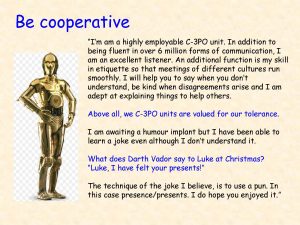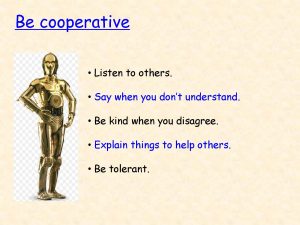Improving questioning and talk.
Background.
Previous Shirley Clarke action research teams have found that:
The impact of using more effective questioning is that children’s thinking is more creative and they have to justify their opinions. Confidence is increased and children then are more able to take risks and ask questions.
Introducing deliberate mistakes is one of the ways improving the quality of questioning in order to unpick the misconception.
What we did.
Over the last term we have used a number of deliberate mistakes to great effect and huge hilarity. My favourite was the measuring length glorious mistake where the confidence of the children had built to such a peak that they were shouting at me “Ms. McCarron not like that, can I show you how I would do it?”.
Glorious Mistake: Number Families
This first was the toughest because as a school community we are still relatively new to growth mindset and philosophy for children. It was an emotional roller coaster.
At the end of each maths lesson I ask the children who would like a session in the afternoon to go over what we have done in the morning. During this particular afternoon’s session we were addressing misconceptions which had come up in the morning to do with ‘number families’ – in particular – subtraction.
Q: What addition sum could we do using all 3 numbers? The children had chosen 6, 4 and 10 as our family.
6 + 4 = 10
What else?
4 + 6 = 10
“Now, what subtraction sums could we do with these numbers?”
Some of the children used our rubber sheep. They all had a go at writing a sum on their whiteboards. The children were asked to come up and share their solution.
6 – 4 = 2
“Does it use our family of 3 numbers?”
“Yes it’s the right answer.”
“What about the 10?”
So then we got:
6 – 4 = 10
Lots of shots of “No! That’s not right!” and several volunteers to be the teacher. The child who had written this sum up retreated slightly and looked unsure. He asked if he could sort it out on his whiteboard and sat working on his own for a bit.
There was a lot of counting rubber sheep action for the next few minutes. Lots of chat, giving and receiving advice as they sorted it out. Finally 2 of the group got very excited and said they’d got it.
Coming up to be the teacher, their delivery was very effective as the rest of their group hung on their every word in case they tripped up in their explanation. When they had finished with a very successful explanation of:
10 – 6 = 4
the boy who had retreated beamed up at me and said “I’ve got the last one.” He proudly came up and shared:
10 – 4 = 6
to much ‘ooing’ and ‘aahing’ and checking with rubber sheep.
The next bit of question and answer led the children to the conclusion that there was a rule for adding – you can do it in any order – that didn’t work with subtraction. The second thing they worked out themselves through trial and error was that they needed the biggest number first.
We concluded that we had made 2 mathematical discoveries which we then went on to share with the whole class the next morning.
All in all a very rewarding session. This was a breakthrough moment and with additional practice, these children have been confidently using number families ever since and have understood the concept of an inverse relationship.
Reflection
The children took proper ownership of the task after the first mistake. There were tricky moments for some as they felt upset at being exposed as wrong but a couple of children were so enthused with sorting out the misconception that the whole group was carried along. They were less polite to each other than they are to me and their questions were very direct and effective. They were very focused on getting it right so that they could come up and be the teacher but they were also good at making sure other people had ‘got it’. A good sense of team. I also feel that they understood it and were engaged more deeply than if I had stood at the front and explained the rules.
Next step
This culture of sharing mistakes has built during the term, so that during our measurement unit the children were able to correct my incompetent measurement of height with lots and lots of advice on how to do it correctly and offers of help. From them taking over and trouble shooting my mistakes, we were then able to write our own success criteria for measuring. This has led to some excellent work on co-constructed success criteria which has been fascinating and which Mrs. Hodges and I will share in subsequent posts.





